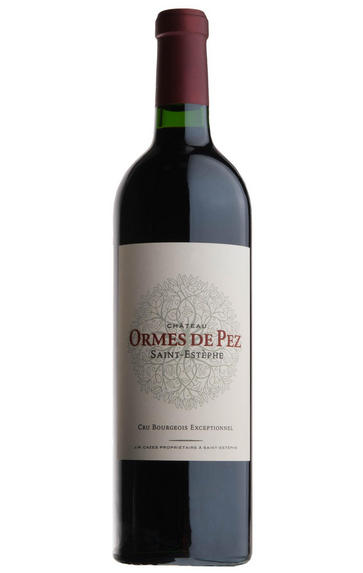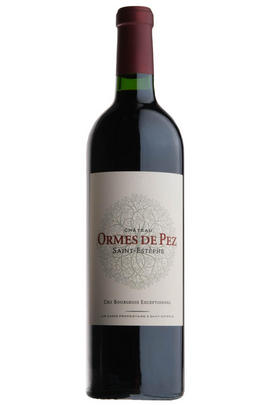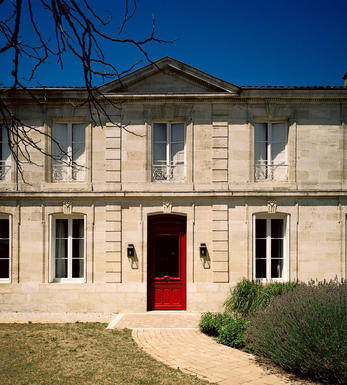
2011 Château Ormes de Pez, St Estèphe, Bordeaux

Critics reviews
Robert M. Parker, Jr. - 30/04/2014
Wine Spectator's 2011 Top-Scoring Red Bordeaux
(James Molesworth, Wine Spectator, April 10, 2012)
(Robert Parker - Wine Advocate - April 2012)
About this WINE

Chateau Ormes de Pez
Château Les Ormes de Pez is one of St-Estèphe`s leading Cru Bourgeois properties. It was bought by Jean-Charles Cazes in 1936 and is now owned and run by Jean-Michel Cazes. The latter owns Lynch-Bages The estate is located just outside the village of Pez in the northern part of the St-Estèphe commune.
There are 32 hectares of vineyards, which lie on soils rich in gravel on a subsoil of sand and clay. They are planted with 60% Cabernet Sauvignon, 30% Merlot and 10% Cabernet Franc. The grapes are hand-harvested and then fermented in temperature-controlled, stainless steel vats. The wine is then matured in a combination of one and two-year-old barrels from Lynch-Bages.
In the last decade, the wines have become richer and more fruit-driven - selection at harvest has become more rigorous and the proportion of Cabernet Sauvignon in the final blend has been increased. The wines normally require at least 5 years of bottle ageing to show at their best.

Saint-Estèphe
Saint-Estèphe is the northernmost of the most important communes of the Médoc and borders Pauillac on its southernmost border, with only a gully and stream separates it from Ch. Lafite. To the north lies the Bas-Médoc.
Saint-Estèphe is defined by the depth of its gravel, which is ubiquitous but of varying depths and occasionally very shallow, when clay predominates. This keeps the soil cooler and wetter than its counterparts so that the wines can appear fresh in lighter vintages, but superbly successful in hot, dry years.
The best châteaux in the south of the commune have the deepest soil and the thickest gravel. Cos d'Estournel has an exceptional terroir with its vineyards being located on a south-facing ridge of gravel with excellent drainage.
Saint-Estèphe is the least gravelly of main Médoc communes and in the north of the commune the vineyards are heavier and more clay-based leading to a rustic style of wine being produced.
The wines can appear austere in youth with a discernable ferric note at some châteaux, but the best typically display good depth of colour, pronounced acidity an tannins in youth and are exceptionally long-lived. At their best, they are the equal of almost any Bordeaux. The well-regarded St Estèphe co-operative controls the production of about half the appellation.
Recommended Châteaux
Cos (Ch. Cos d'Estournel), Ch. Montrose, Ch. Calon-Ségur, Ch. Lafon-Rochet, Ch. Les Ormes de Pez, Ch. Beau-Site, Ch. Cos Labory, Ch. Phélan-Ségur

Cabernet Sauvignon Blend
Cabernet Sauvignon lends itself particularly well in blends with Merlot. This is actually the archetypal Bordeaux blend, though in different proportions in the sub-regions and sometimes topped up with Cabernet Franc, Malbec, and Petit Verdot.
In the Médoc and Graves the percentage of Cabernet Sauvignon in the blend can range from 95% (Mouton-Rothschild) to as low as 40%. It is particularly suited to the dry, warm, free- draining, gravel-rich soils and is responsible for the redolent cassis characteristics as well as the depth of colour, tannic structure and pronounced acidity of Médoc wines. However 100% Cabernet Sauvignon wines can be slightly hollow-tasting in the middle palate and Merlot with its generous, fleshy fruit flavours acts as a perfect foil by filling in this cavity.
In St-Emilion and Pomerol, the blends are Merlot dominated as Cabernet Sauvignon can struggle to ripen there - when it is included, it adds structure and body to the wine. Sassicaia is the most famous Bordeaux blend in Italy and has spawned many imitations, whereby the blend is now firmly established in the New World and particularly in California and Australia.


Buying options
Add to wishlist
Description
Eight years on, the 2011 Ormes de Pez is starting to really open up. The nose is intensely spicy, with savoury cedar notes and brooding dark fruit. There’s an almost floral edge to its aromatic profile, with something that hints at eucalyptus (perhaps a nod to the coolness of the vintage). The palate is smooth and lush, its age – and time in oak (15 months) – tells, with layers of leather and spice joining the core of black fruit. The chalky tannins and mouth-watering acidity call for hard cheeses or roast lamb. Drink now to 2021.
Berry Bros. & Rudd (July 2019)
wine at a glance
Delivery and quality guarantee